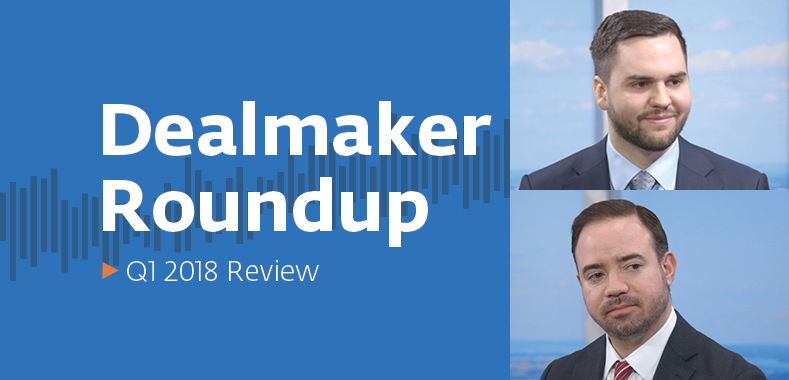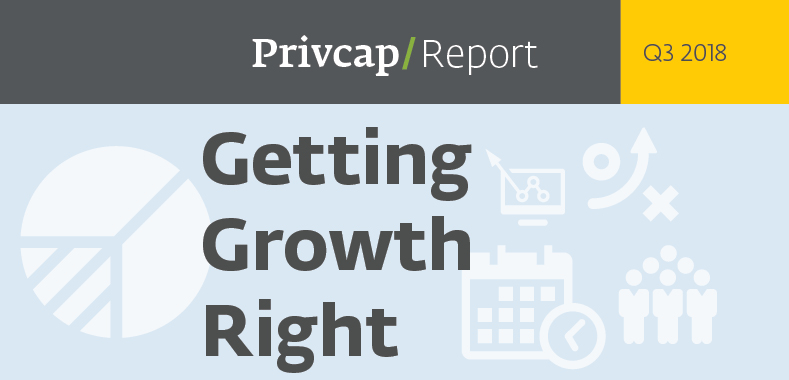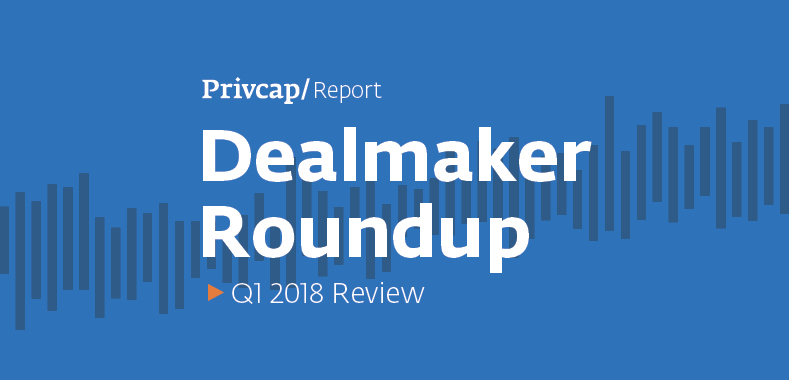Perfecting the Deal: Championing Due Diligence on Both Sides
With the surge of dealflow in 2018, the transaction advisory services leader at EisnerAmper outlines the findings of their survey on the best ways to allocate capital and navigate risk.
Transcript Download Transcript
Perfecting the Deal: Championing Due Diligence on Both Sides
John Ruckstuhl, EisnerAmper:
EisnerAmper is a leading global middle market firm. We specialize in audit tax and consulting.
The group that I lead is the Transaction Advisory Services practice, and we’re working with private equity groups to perform buy-side and sell-side due diligence, and quality earnings.
Privcap: 2018 saw mega dealflow, but what about the middle market?
Ruckstuhl: We’re very busy. We in the middle market like when there’s a lot of big deals. We see a lot of … Not just an uptick in deal volume, but also the size of deals. Multiples are going up, and also starting to see an increase in the debt multiples as well, fueling that growth.
With the demand to put capital to work, what is this doing to the deal market?
Ruckstuhl: In some cases the availability of that is good because it’s increasing the multiples. But, it’s also slowing the process down a little bit, especially private equity groups that don’t get the financing lined up early enough in the process. We see deals that get delayed because our clients are still struggling with getting the negotiations that providers nail down.
There’s a lot of competition, which is good. But, like going to a diner, sometimes too many options can be a bad thing as well.
Do PE firms with better access to financing have an advantage?
Ruckstuhl: Yes. They can go in, it all comes down to speed of close. The more buttoned up you are, especially if there’s an investment banker running the process. It comes down to really the strength of your bid. Many times, it’s not just financial terms, not just multiple. But, it also comes down to fit.
Is the debt market an indicator of the tail end of a cycle?
Ruckstuhl: I think we have a good two years of runway left. It’s really two reasons. One, again, on the debt, we’re seeing debt multiples creep up. After the 2008 crisis, we saw that the amount of debt in each deal decreased to where it was a 50/50 debt to equity multiple. Now, we’re seeing debt levels get up to 60, in some cases 70%.
What are the factors killing deals today?
Ruckstuhl: It really comes down to preparation. Family businesses, even though there’s been a prevalence or an increase in South Side due diligence, you still see at the lower end of the middle market, investment banks that don’t mandate south side work. You still see surprises come up in the financials. That’s really the management team either not knowing their numbers as adept as they should, or again these are companies with, oftentimes, relatively spotty financial reporting systems.
For the buyer what is needed in preparation for a sale?
Ruckstuhl: A lot of times it comes down to understanding the metrics. The best way to explain a business, especially to a non-operator.
Now, with a financial buyer in the picture, helping them understand what’s happening with the business through numbers. Understanding customers, again, understanding your key performance indicators, letting somebody know how the business is doing.
On behalf of a buyer, we’ll help not negotiate, but we’ll soften up the blow, so to speak, of some things in the numbers that might lead to a reduction in price. Probably another good thing to just bring up is the role of work and capital in the deal process, is often left to the end. But, that’s also one of the biggest areas of negotiation and uncertainty.
Why is sell-side due diligence important?
Ruckstuhl: The biggest thing with sell-side due diligence is helping a company prepare for a sell. Investment bankers are helping the company with the process, and evaluation. But, we focus on really making the finance team not smarter, but more prepared. Helping to anticipate questions, develop answers, and identify potential red flags in advance that can be mitigated up front.
Just to get everybody’s stories straight on how the company is doing. And, I think, some cases making sure that the operation folks and the finance folks are all on the same page.
No surprises, in other words…
Ruckstuhl: The worst thing that can happen is a surprise comes up, especially towards the end of the process. Also, just on speed of close, the longer a process goes, the more attention management starts devoting towards the transaction, and not the business, the greater the risk that the operations will suffer. And you get into this spiral of declining results, buyer wants to reduce the purchase price, and the deal becomes the consuming factor as opposed to what made you successful at the start. And that’s the running of the business.
How should a buyer manage competitive bidders?
Ruckstuhl: Most companies underestimate the amount of time and effort it takes to go through the process. It truly is a process that takes months, if not a year from when you first start engaging in an investment banker and considering a transaction to when the deal will ultimately close.
Getting people to help you through that process is important. Again, so you can focus your time on running the business, and let other experts help you with the process.















